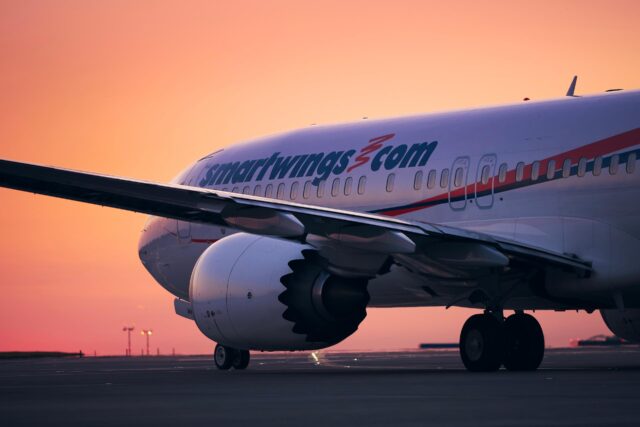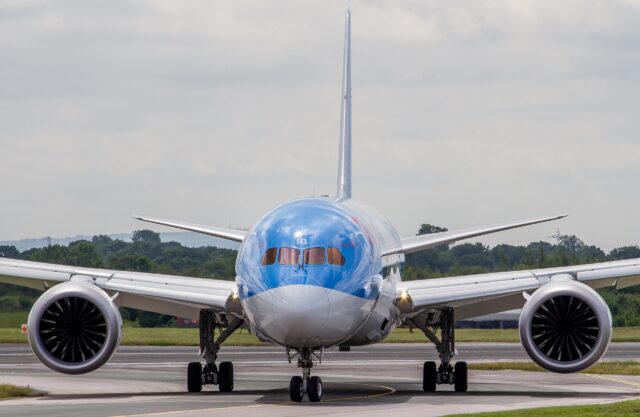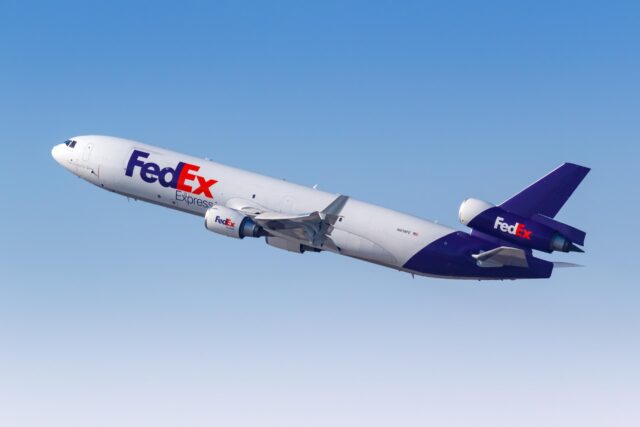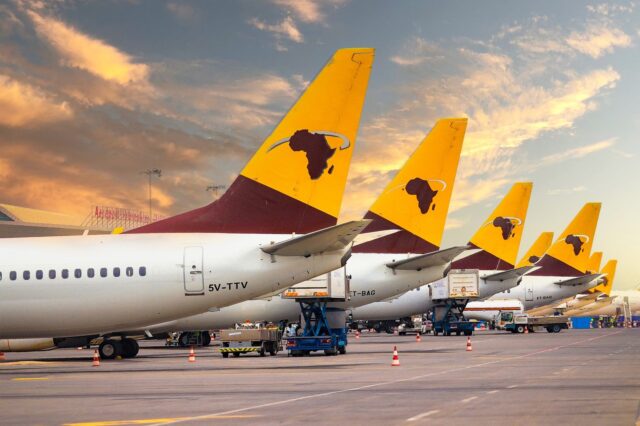KC-46 flight with upgraded vision system boosts Boeing’s push to resolve long-running refuelling issues

November 17, 2025
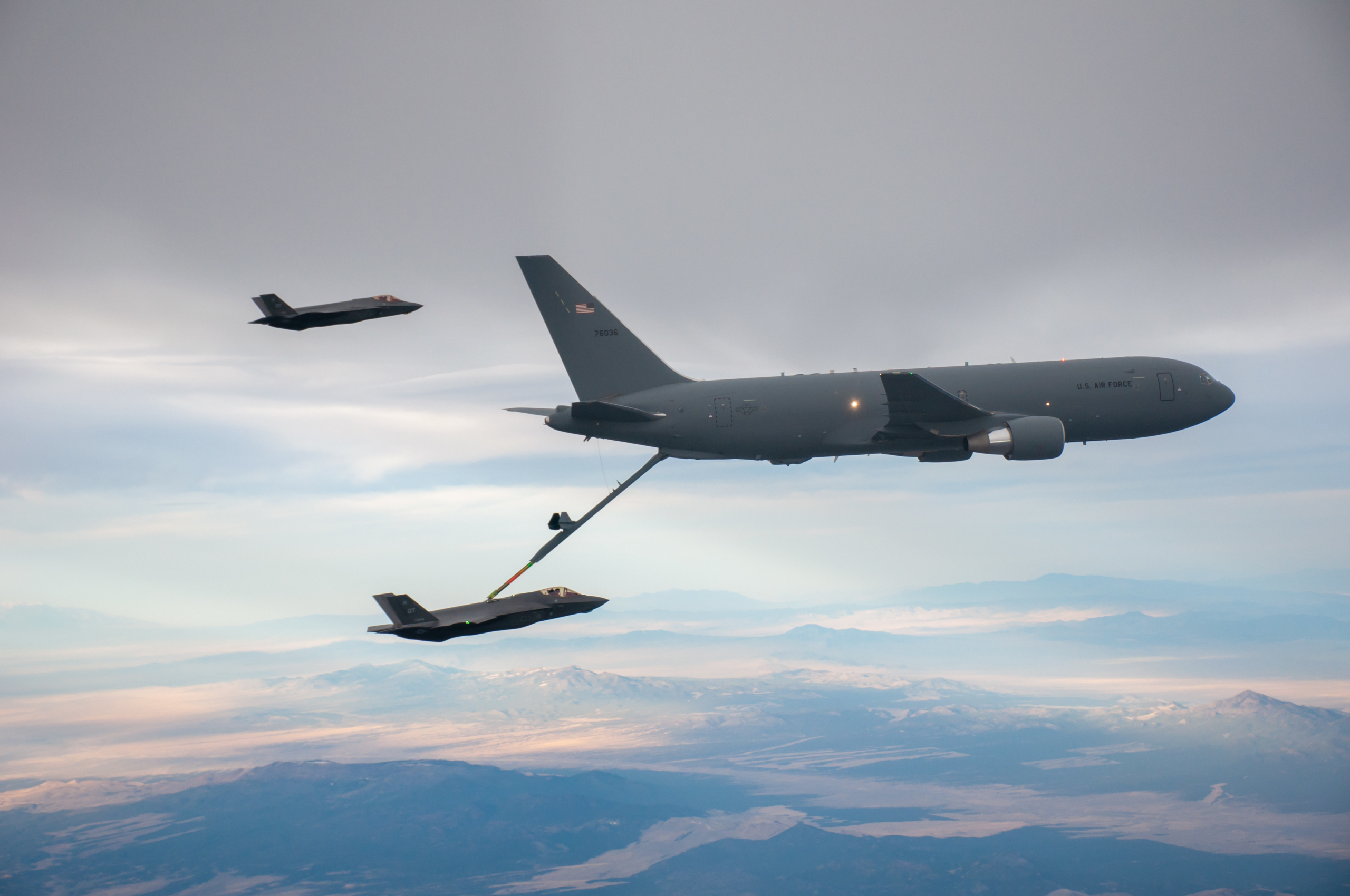
Boeing has begun flight trials of the long-awaited Remote Vision System 2.0 (RVS 2.0) on the KC-46A Pegasus, marking a milestone the company hopes will finally draw a line under years of technical discord that have overshadowed the US Air Force’s newest tanker.
The breakthrough flight took place on 15 November in the Seattle area and was disclosed by Steve Parker, chief executive of Boeing Defense, Space & Security, during a roundtable with journalists on the eve of the Dubai Airshow.
The choice of location, in the region where the aircraft is built, was symbolic, given the programme’s long history of redesigns, schedule slips and contractual disputes.
“We had the first flight with the new remote visual system. So that’s a huge milestone for the programme,” Parker told reporters.
The event marks the start of a months-long test campaign that Boeing must complete before the US Air Force signs off on the upgrade.
What the RVS 2.0 system brings to the KC-46A
RVS 2.0 replaces the troubled Remote Vision System 1.0, whose deficiencies were categorised as top-level “Category 1” hazards by the service, and later only partly mitigated with the interim RVS 1.5 installed on current production aircraft.
The new system introduces 3D imagery, full-colour 4K-resolution cameras, improved geometry, wider panoramic coverage and a laser range capability.
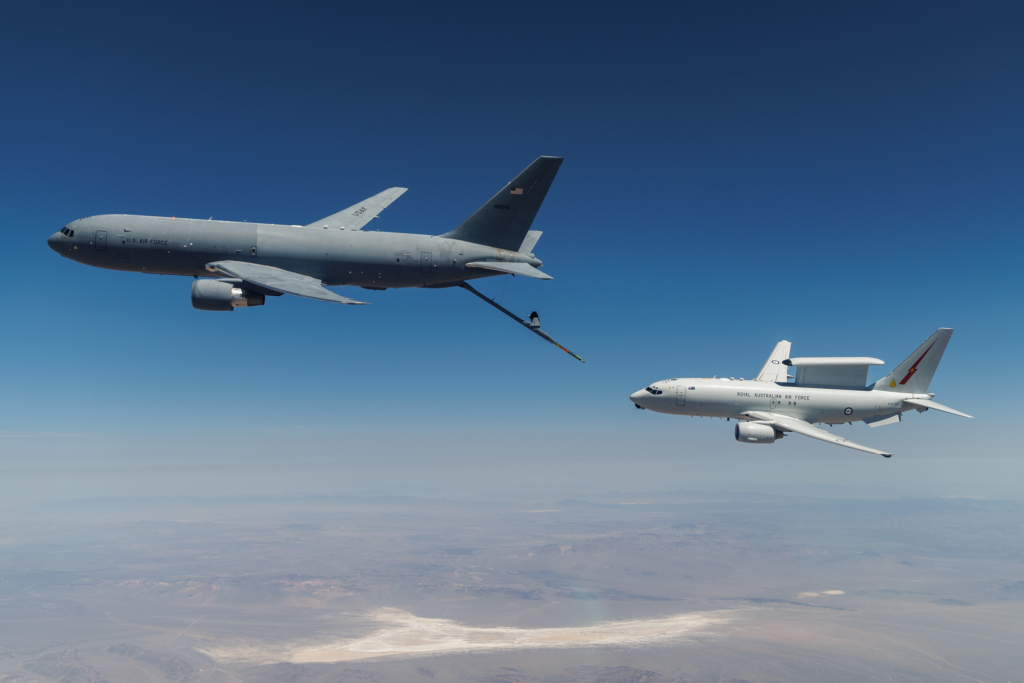
By contrast, the original system suffered from image distortion, poor depth perception and sensitivity to dynamic lighting, creating enough operational risk that the Air Force restricted certain refuelling profiles at night or in challenging light. These issues were serious enough to contribute to a two-year freeze in KC-46 deliveries earlier in the programme.
A redesign agreed in 2020, but years of testing still ahead
The Air Force and Boeing formally agreed in April 2020 to redesign the entire system at no additional government cost, culminating in what became the RVS 2.0 baseline. Since then, the design has undergone several technical reviews, including a critical design review in 2022 that led to a further 19-month schedule extension to certify the commercial off-the-shelf camera hardware.
The Air Force’s earlier target of fielding the system by late 2023 has slipped repeatedly. The service now expects operational release in 2026, with wider fleet retrofit running into 2027.
Acknowledging the prolonged development, Parker said: “And so we’ll go into testing now in 2026 and do contact testing eventually here as well.”
Toughest phase ahead, KC-46 contact testing for boom and drogue ops
Contact testing, where aircraft link up in flight to transfer fuel, is traditionally the most demanding phase of tanker certification. The KC-46 will need to demonstrate reliability across both boom and drogue refuelling, spanning fighters, transports and maritime patrol aircraft.
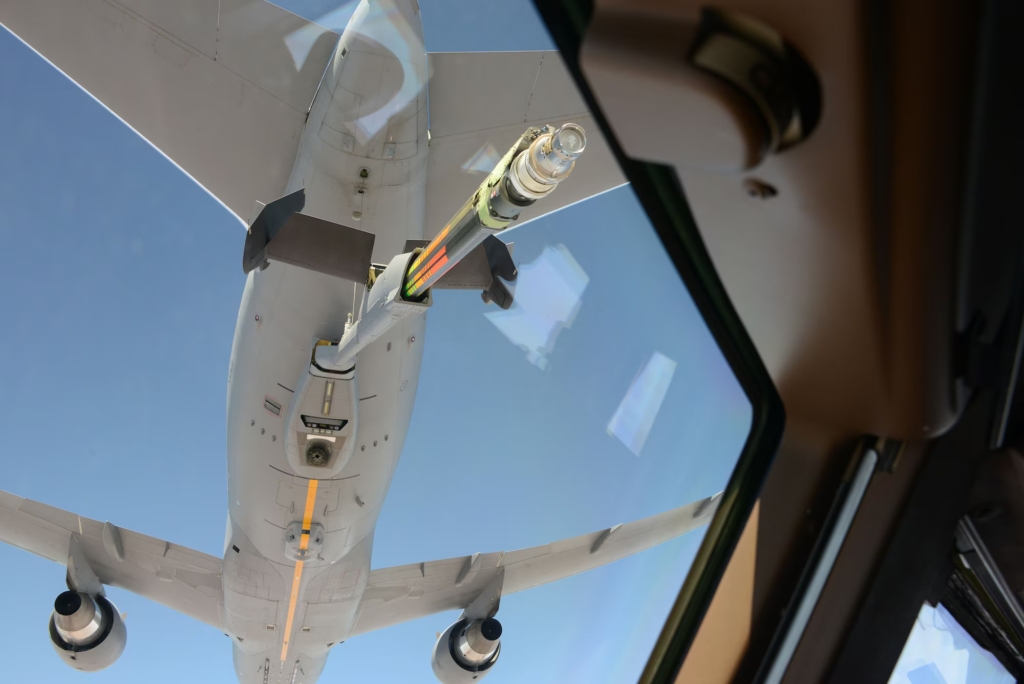
Unlike the KC-135, whose boom operators lie prone at the rear of the aircraft and look directly through a window, the KC-46 is built around a digital, remote-operation concept. The operator sits on the main deck behind the cockpit, controlling the boom and drogues through panoramic displays. The design improves ergonomics and workload management, but makes the vision system central to safe operations.
Air Force documentation notes that the KC-46 must ultimately refuel “any fixed-wing receiver capable aircraft on any mission”, making the operator’s panoramic view essential for situational awareness. RVS 2.0 is therefore not simply a camera upgrade, but a cornerstone of the tanker’s employment philosophy.
Open deficiencies remain as USAF prepares larger KC-46 buy
Beyond the visual system, the KC-46 programme still has several open Category 1 deficiencies, including issues related to the boom telescope actuator and a small number of aircraft-wide product quality deficiency reports.
Despite these unresolved items, the Air Force decided earlier this year to cancel plans for a competitive follow-on tanker and instead proceed with the purchase of up to 75 additional KC-46s, a major vote of confidence for a programme long under scrutiny.
Boeing executives emphasised in Dubai that the decision demonstrates the tanker’s long-term value once its shortcomings are resolved. Parker said aircraft delivered today with RVS 1.5 are performing well, describing the interim configuration as “exceptional”.
Boeing targets Middle East sales with KC-46 and T-7 portfolio
Bernd Peters, vice-president for business development and strategy at Boeing’s defence division, said the KC-46 remains one of the company’s flagship offerings in the Middle East, supported by a broader campaign featuring the T-7 Red Hawk trainer and a growing suite of autonomous systems.
While declining to detail potential regional customers, Peters noted that Qatar has already expressed interest in the Pegasus, and that US military KC-46 operations in the region provide prospective buyers with a live demonstration of its capabilities.

“At the appropriate time, we’ll be able to discuss that. But for now, we still feel pretty bullish on KC-46 in the region,” he said.
The KC-46 and T-7 are two of Boeing’s most strategically important defence programmes, both having faced delays, redesigns and complex certification paths. Parker emphasised throughout the briefing that Boeing Defense is now imposing tighter discipline across its portfolio.
“From a Boeing Defense, Space & Security perspective, it is around driving stability and performance into our production and development programmes,” he said.
